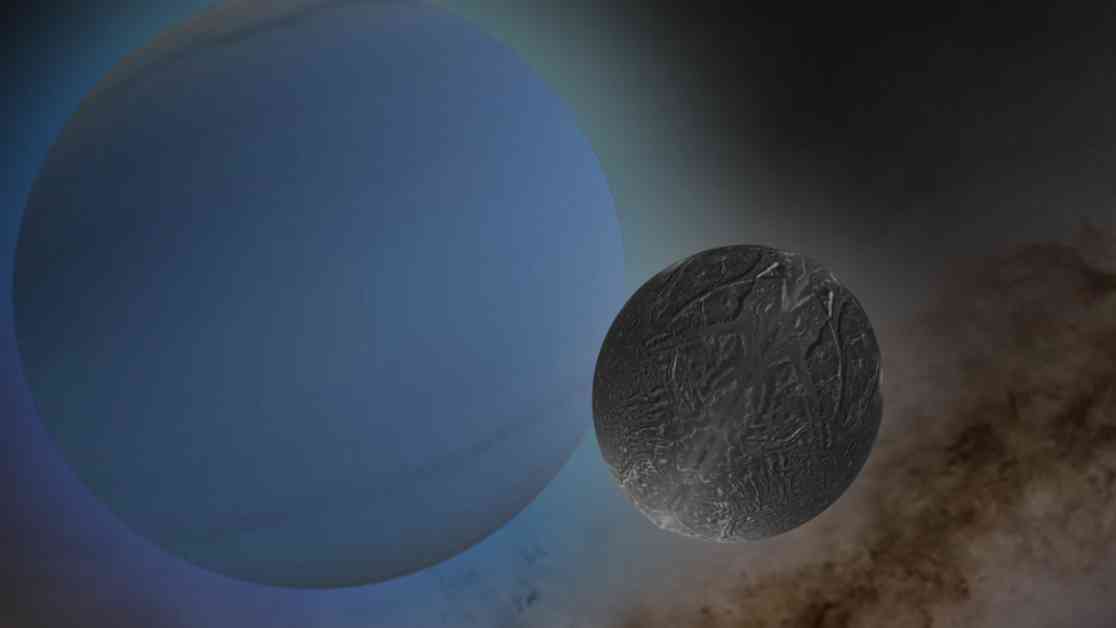A recent discovery using the James Webb Space Telescope (JWST) has shed light on the mysterious surface of Ariel, a moon of Uranus. Scientists have long been puzzled by the presence of carbon dioxide ice on Ariel’s surface, considering its distance from the sun. Typically, carbon dioxide would turn to gas and be lost in space at such distances.
Previous theories suggested that radiolysis, a process involving interactions between Ariel’s surface and charged particles from Uranus’ magnetosphere, could explain the presence of carbon dioxide. However, new evidence from the JWST indicates that the carbon dioxide may actually come from Ariel’s interior, possibly from a hidden subsurface ocean.
By analyzing the spectra of light from Ariel, researchers were able to identify high concentrations of carbon dioxide and carbon monoxide on the moon’s surface. This discovery challenges previous assumptions about the origin of these compounds and suggests that they may be replenished from within Ariel.
Additionally, the presence of carbonite minerals in the spectra hints at the existence of a liquid water ocean beneath Ariel’s icy surface. This finding raises the possibility of active cryovolcanoes on the moon, which could be responsible for releasing carbon compounds into Uranus’ magnetic field.
While the last spacecraft to visit Uranus and its moons was Voyager 2 nearly 40 years ago, there is growing interest in exploring this distant system further. Scientists believe that a dedicated mission to Uranus could provide valuable insights into the formation of the solar system and the potential for ocean worlds beyond our own.
The research team’s findings were published in The Astrophysical Journal Letters, highlighting the importance of future exploration of the Uranian system. By unlocking the secrets of Uranus and its moons, scientists hope to better understand the complex processes at work in our solar system and apply this knowledge to exoplanets in other star systems.












